Safe Homes: What You Need to Know
Creating a safe home is not just about locking your doors and hoping for the best; it’s a proactive approach to ensuring that every member of your household feels protected and secure. In today’s world, where uncertainties loom large, understanding the essential aspects of home safety can be a game-changer. Are you aware of the hidden dangers lurking in your home? From fire hazards to potential intrusions, the risks are real, and they can often go unnoticed until it’s too late.
In this article, we will delve into the critical components of home safety, focusing on preventative measures, emergency preparedness, and the vital role that community awareness plays in fostering a secure living environment. It’s like building a fortress around your family, where every brick represents a safety measure that keeps the threats at bay. So, whether you’re a seasoned homeowner or a first-time renter, let’s explore how you can enhance your home’s safety and ensure peace of mind for yourself and your loved ones.
Imagine your home as a sanctuary—a place where you can unwind, relax, and feel completely at ease. However, without the right safety measures in place, that sanctuary can quickly turn into a source of anxiety. The good news? By taking a few simple steps, you can transform your living space into a haven of safety. Let’s embark on this journey together and discover how to make your home the safest place it can be!
Identifying common risks in your home is a crucial first step toward enhancing safety. The reality is that many of us overlook the potential hazards that exist right under our noses. For instance, did you know that cooking accidents are one of the leading causes of house fires? Or that unsecured windows can be an open invitation for intruders? Awareness is the first line of defense in preventing accidents and ensuring a secure environment.
Here are some common risks to be aware of:
- Fire Hazards: Cooking, heating equipment, and electrical issues can all lead to fires.
- Intrusions: Unlocked doors and windows can make your home an easy target for burglars.
- Carbon Monoxide Poisoning: Faulty appliances can leak this odorless gas, posing a serious risk to health.
- Slips and Falls: Cluttered hallways and wet floors can lead to accidents.
By recognizing these risks, you can take proactive measures to mitigate them, turning your home into a fortress of safety.
Having the right safety equipment is vital for protecting your home and family. Think of these items as your safety net—each one plays a specific role in ensuring that your living space remains secure. From smoke detectors to fire extinguishers, equipping your home with essential safety tools can make all the difference in an emergency situation.
Smoke detectors are critical for early fire detection. They are like the silent guardians of your home, alerting you to danger before it becomes a full-blown crisis. There are several types of smoke detectors available, including ionization and photoelectric detectors, each with its unique advantages. Installing them in key areas such as the kitchen, bedrooms, and hallways is essential to maximize their effectiveness. Don’t forget to test them monthly and change the batteries at least once a year to ensure they function correctly!
Carbon monoxide detectors are essential for preventing poisoning. This colorless, odorless gas can be incredibly dangerous, and having a detector in your home is like having a trusted friend watching your back. Install these devices near sleeping areas and on every level of your home. Regular testing is crucial—after all, you wouldn’t want to find out your detector isn’t working when it’s too late!
Fire extinguishers can save lives in emergencies. Think of them as your first line of defense against small fires. There are various types available, including Class A, B, and C extinguishers, each designed to tackle different types of fires. Make sure to place them in easily accessible locations, such as the kitchen and garage, and familiarize yourself with how to use them properly. Regular maintenance is key to ensuring they perform optimally when you need them most.
Implementing security measures can deter intruders and enhance safety. Your home should feel like a fortress, and there are numerous strategies you can employ to fortify it. Consider installing alarm systems and surveillance cameras, which serve as both deterrents and tools for monitoring your property. Additionally, participating in neighborhood watch programs can create a sense of community vigilance, making your neighborhood safer for everyone.
Being prepared for emergencies can make a significant difference during crises. Have you ever thought about what you would do in the event of a fire or natural disaster? Having a family emergency plan is essential. This plan outlines what each family member should do during various emergencies, ensuring that everyone knows their role and responsibilities.
A family emergency plan ensures everyone knows what to do during a crisis. Start by discussing potential emergencies with your family and establishing communication strategies. Designate meeting points outside your home and ensure everyone understands how to reach them. It’s like creating a roadmap for safety—one that everyone can follow when the unexpected occurs.
Regularly practicing emergency drills helps reinforce safety protocols. Just like fire drills at school, these practices prepare your family for real-life situations. Conduct drills for various scenarios, such as fires, earthquakes, or severe weather, and make it a fun family activity. The more prepared you are, the more confident you’ll feel when facing emergencies.
Q: How often should I test my smoke detectors?
A: It’s recommended to test your smoke detectors at least once a month and replace the batteries once a year.
Q: Where should I install carbon monoxide detectors?
A: Install them near sleeping areas and on every level of your home for maximum safety.
Q: What type of fire extinguisher should I have?
A: A multi-purpose extinguisher (Class ABC) is ideal for home use, as it can tackle different types of fires.
Q: How can I make my home more secure?
A: Consider installing an alarm system, security cameras, and participating in neighborhood watch programs.
Q: What should I include in my family emergency plan?
A: Include communication strategies, designated meeting points, and roles for each family member during emergencies.

Understanding Home Safety Risks
When it comes to making your home a safe haven, understanding the potential risks lurking within is the first step. **Home safety risks** can arise from various sources, and being aware of them can significantly reduce the likelihood of accidents. From fire hazards to potential intrusions, the threats are real, and they often catch us off guard. So, what are the most common risks we should be vigilant about?
First and foremost, **fire risks** are a leading cause of concern in many households. Everyday activities, such as cooking or using electrical appliances, can inadvertently lead to a fire if not monitored. Did you know that cooking is the number one cause of home fires? According to the National Fire Protection Association (NFPA), nearly half of all home fires start in the kitchen. To mitigate this risk, it's essential to keep flammable items away from heat sources and never leave cooking unattended.
Another significant risk comes from **intrusions**. Home burglaries can happen in the blink of an eye, and often, they occur when you least expect it. Statistics show that homes without security systems are three times more likely to be broken into. Enhancing your home security with measures such as alarm systems, deadbolts, and outdoor lighting can be a game changer in preventing these intrusions.
In addition to these, there are also **environmental hazards** that can pose a threat to your home’s safety. For instance, **carbon monoxide** is a silent killer that can seep into your home from malfunctioning appliances or blocked vents. This colorless, odorless gas can lead to serious health issues or even death. Installing carbon monoxide detectors is not just a good idea; it's essential for protecting your family.
Moreover, **slips and falls** are among the most common household accidents, especially for young children and the elderly. Simple measures, like securing loose rugs, installing handrails, and ensuring proper lighting in stairwells, can significantly reduce these risks. Remember, a little awareness can go a long way in preventing accidents.
To summarize, here are some of the key risks to be aware of in your home:
- Fire Hazards: Cooking, electrical issues, and heating equipment.
- Intrusions: Lack of security measures.
- Environmental Hazards: Carbon monoxide and other toxic gases.
- Slips and Falls: Poorly maintained walkways and stairs.
Understanding these risks is the first step toward creating a safer living environment. By identifying potential hazards and taking proactive measures, you can protect not only your home but also the people you love. So, why wait? Start assessing your home today and make the necessary changes to ensure safety for everyone!

Essential Safety Equipment
When it comes to ensuring the safety of your home and loved ones, having the right safety equipment is absolutely crucial. It’s like having a trusty toolbox ready to tackle any unexpected mishaps that life throws your way. Imagine walking into your home, knowing that you have the right tools to protect yourself and your family from various dangers. This sense of security is invaluable, and it all starts with understanding what equipment is essential.
One of the most important pieces of safety equipment you can install in your home is a smoke detector. These little devices are your first line of defense against fire hazards. They can detect smoke before it turns into a raging inferno, giving you precious minutes to escape. But not all smoke detectors are created equal. There are different types available, such as ionization and photoelectric detectors, each with its own strengths. For instance, ionization detectors are great for detecting fast-flaming fires, while photoelectric models excel at sensing smoldering fires. Installing a combination of both types can provide comprehensive coverage for your home.
To ensure your smoke detectors are always ready to spring into action, regular maintenance is key. This includes testing them monthly and replacing the batteries at least once a year. Don’t forget to replace the entire unit every ten years, as their sensitivity diminishes over time. By being proactive, you can ensure that your smoke detectors are reliable when it matters most.
Another critical piece of equipment is the carbon monoxide detector. This device is a lifesaver, literally, as it prevents carbon monoxide poisoning—a silent killer. Carbon monoxide is a colorless, odorless gas produced by burning fossil fuels, and it can be deadly if it accumulates in your home. Installing these detectors near sleeping areas and on every level of your home is essential. Just like smoke detectors, they require regular testing and battery changes to ensure they function correctly. Make it a habit to check them monthly, and replace them every five to seven years.
Having a fire extinguisher readily available can save lives and property in the event of a fire. But not just any extinguisher will do; you need to know which type is appropriate for different kinds of fires. For example, Class A extinguishers are for ordinary combustibles like wood and paper, while Class B extinguishers are for flammable liquids. It’s advisable to have at least one extinguisher in key areas of your home, such as the kitchen and garage. Remember, knowing how to use an extinguisher can be just as important as having one. Familiarize yourself with the PASS technique—Pull, Aim, Squeeze, and Sweep—to ensure you’re ready to act in an emergency.
In addition to fire safety equipment, home security measures are vital for protecting your living space from intruders. Installing an alarm system can deter potential burglars and give you peace of mind. Furthermore, consider adding surveillance cameras to keep an eye on your property, even when you’re not home. These systems can often be monitored remotely via your smartphone, allowing you to stay connected to your home’s safety at all times. Additionally, getting involved in a neighborhood watch program can foster a sense of community and enhance security for everyone.
In conclusion, investing in essential safety equipment is not just about compliance; it's about creating a secure environment for you and your family. By being proactive and informed, you can significantly reduce risks and enhance your home’s safety profile. Remember, it’s better to be prepared than to be caught off guard!
Q: How often should I test my smoke detectors?
A: It's recommended to test your smoke detectors at least once a month to ensure they are functioning properly.
Q: Where should I install carbon monoxide detectors?
A: Install carbon monoxide detectors near sleeping areas and on every level of your home for optimal safety.
Q: How do I know which fire extinguisher to buy?
A: Choose a fire extinguisher based on the types of fires you may encounter. Class A extinguishers are suitable for ordinary combustibles, while Class B is for flammable liquids.
Q: How can I improve my home security?
A: Consider installing an alarm system, surveillance cameras, and participating in neighborhood watch programs to enhance your home security.

Smoke Detectors
Smoke detectors are not just gadgets hanging from the ceiling; they are your first line of defense against the devastating effects of fire. Imagine waking up in the middle of the night to the smell of smoke and the sound of a shrill alarm—this could be the difference between life and death. These devices are designed to detect smoke particles in the air, alerting you to potential danger before it becomes a raging inferno. They come in various types, each with its unique features and benefits, ensuring that you can choose the right one for your home.
There are primarily two types of smoke detectors: ionization and photoelectric. Ionization smoke detectors are particularly sensitive to fast-flaming fires, such as those caused by paper or flammable liquids. On the other hand, photoelectric detectors excel at sensing smoldering fires, which produce more smoke and take longer to ignite. Understanding these differences can help you make an informed choice about which type to install in your home.
When it comes to installation, the placement of your smoke detectors is crucial. The best practice is to install them in every bedroom, outside each sleeping area, and on every level of your home, including the basement. If you have a large house, consider additional detectors in hallways or other common areas. It's also important to mount them on the ceiling or high on a wall, as smoke rises. Regular maintenance is equally important; you should test your smoke detectors monthly and replace the batteries at least once a year. Many modern detectors come with a sealed lithium battery that can last up to 10 years, but it's still essential to replace the entire unit after that time.
To help illustrate the importance of smoke detectors, consider the following table:
| Type of Smoke Detector | Best For | Key Features |
|---|---|---|
| Ionization | Fast-flaming fires | Quick response to flames, less effective for smoldering fires |
| Photoelectric | Smoldering fires | Better at detecting smoke, slower response to flames |
By understanding the different types of smoke detectors and their optimal placement, you can significantly enhance your home’s safety. Remember, having a smoke detector is just the first step; regular maintenance and awareness of its functionality are equally important. So, take a moment to check your smoke detectors today—your family’s safety might just depend on it!
- How often should I test my smoke detectors? It's recommended to test them monthly to ensure they are functioning properly.
- When should I replace my smoke detectors? Smoke detectors should be replaced every 10 years, or sooner if they fail to respond during testing.
- Can I use a combination of both types of smoke detectors? Absolutely! Using both ionization and photoelectric detectors can provide the best protection against different types of fires.
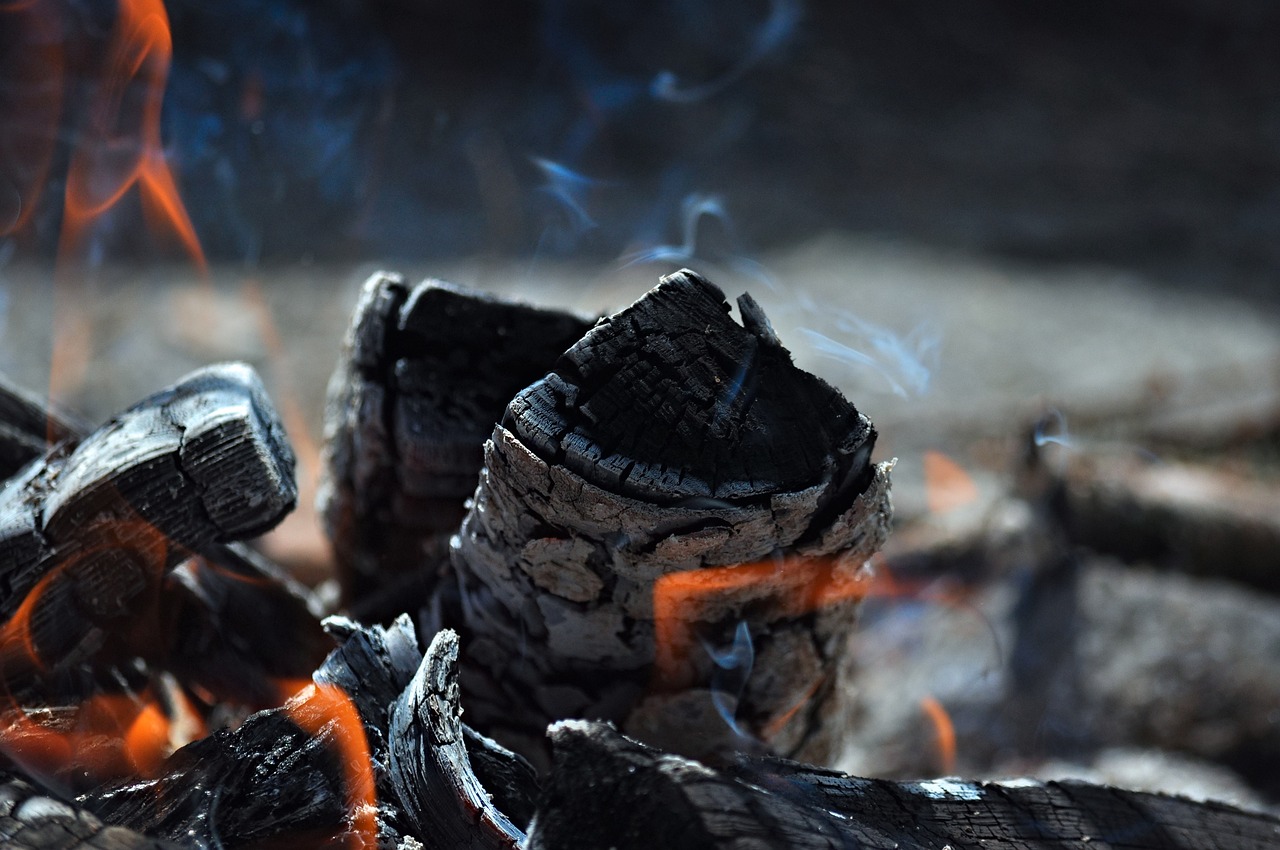
Carbon Monoxide Detectors
Carbon monoxide detectors are not just gadgets; they are lifesavers! This silent killer can seep into your home without you even realizing it. Carbon monoxide (CO) is a colorless, odorless gas produced by burning fossil fuels, and it's often found in homes with gas appliances, fireplaces, or attached garages. The importance of having a reliable carbon monoxide detector cannot be overstated—it's your first line of defense against poisoning. Imagine waking up in the middle of the night, feeling dizzy and confused, only to find out that CO has been silently invading your space. Scary, right? That's why these detectors are essential!
When it comes to choosing a carbon monoxide detector, there are a few types available on the market. You can opt for battery-operated models, which are easy to install and perfect for renters, or hardwired models that connect directly to your home's electrical system for continuous power. Some advanced models even come with digital displays that show CO levels, giving you real-time information about your environment. Regardless of the type you choose, ensure it's certified by a reputable testing laboratory, such as Underwriters Laboratories (UL).
Installation is key to the effectiveness of these detectors. Place them near sleeping areas and on every level of your home, especially near bedrooms where you and your family sleep. It's also wise to install one in the hallway leading to the sleeping areas, as this will alert you if CO levels rise while you’re sleeping. Remember to keep them at least 15 feet away from fuel-burning appliances to avoid false alarms. And don't forget to test your detectors monthly and replace the batteries at least once a year. A detector is only as good as its maintenance!
Regular testing is crucial for ensuring your carbon monoxide detector functions correctly. Most models come with a test button—just press it to make sure the alarm sounds. If it doesn’t, you may need to replace the unit. Additionally, carbon monoxide detectors have a limited lifespan, typically around 5 to 7 years. Be sure to check the expiration date on your device and replace it as needed. Keeping your family safe from carbon monoxide poisoning is not just about having the right equipment; it's also about knowing how to use and maintain it effectively.
In conclusion, carbon monoxide detectors are a small investment for peace of mind and safety. They provide an early warning system that can save lives. So, take a moment to check your home for these essential devices. Are they installed correctly? Are they functioning properly? If not, it’s time to act! Your family's safety is worth it.
- How often should I replace my carbon monoxide detector? It's recommended to replace your carbon monoxide detector every 5 to 7 years, depending on the manufacturer's guidelines.
- Can I use a smoke detector instead of a carbon monoxide detector? No, smoke detectors and carbon monoxide detectors serve different purposes. It's important to have both for comprehensive safety.
- What should I do if my carbon monoxide detector goes off? If your detector sounds, evacuate your home immediately and call emergency services. Do not re-enter until it is deemed safe.
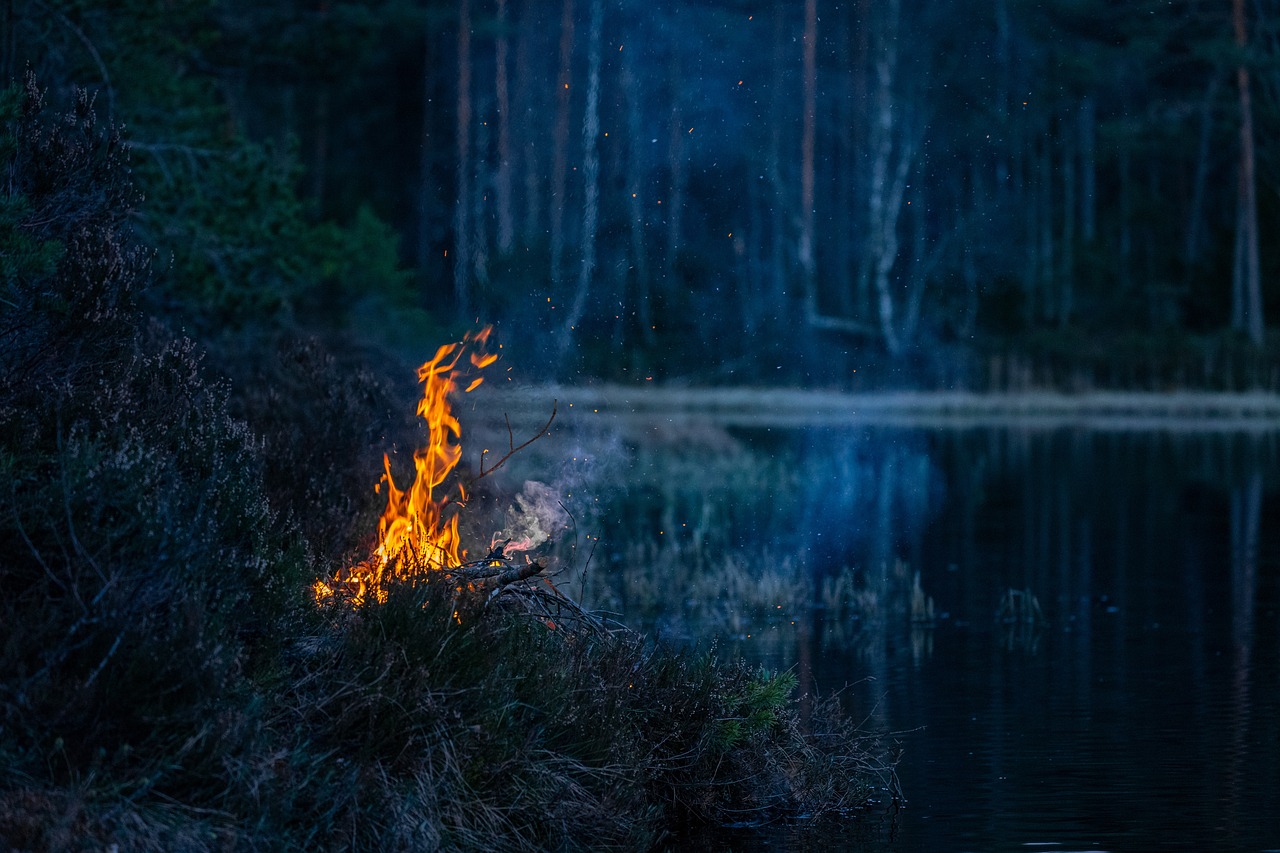
Fire Extinguishers
When it comes to home safety, are your first line of defense against unexpected fires. Imagine you're in your cozy kitchen, and suddenly you see flames licking up from the stovetop. In that moment, having a fire extinguisher within reach can mean the difference between a small mishap and a full-blown disaster. But not all fire extinguishers are created equal, and understanding the different types, their proper usage, and maintenance is crucial to ensure they perform optimally when you need them most.
There are several types of fire extinguishers, each designed for specific kinds of fires. For instance, you have:
- Class A: For ordinary combustibles like wood, paper, and cloth.
- Class B: For flammable liquids such as gasoline, oil, and grease.
- Class C: For electrical fires.
- Class D: For combustible metals.
- Class K: Specifically for kitchen fires involving cooking oils and fats.
Knowing which type of extinguisher to use can be lifesaving. For instance, using a Class A extinguisher on a grease fire can exacerbate the situation, while a Class K extinguisher is specifically designed to tackle such fires safely. Therefore, it's essential to choose the right extinguisher for your home, especially if you have a kitchen that sees a lot of cooking activity.
Now, let’s talk about installation. Ideally, fire extinguishers should be placed in easily accessible locations, such as:
- Near the kitchen, but not too close to the stove.
- In the garage or workshop.
- On each level of your home, including the basement.
Once you've got your fire extinguishers in place, regular maintenance is key. You should check the pressure gauge monthly to ensure it's in the green zone, indicating it's fully charged. Additionally, it's recommended to have your extinguishers serviced every 1-2 years by a professional. Remember, an extinguisher is only effective if it's ready to go when you need it!
In summary, fire extinguishers are essential safety tools that every home should have. They not only provide peace of mind but also empower you to act quickly in case of a fire. So, take the time to choose the right type, install them in strategic locations, and maintain them regularly. Your family’s safety could depend on it!
Q: How often should I replace my fire extinguisher?
A: Generally, fire extinguishers should be replaced every 10-12 years, but always check the manufacturer's guidelines.
Q: Can I use a fire extinguisher on an electrical fire?
A: Yes, but ensure you use a Class C fire extinguisher specifically designed for electrical fires.
Q: What should I do if my fire extinguisher doesn’t work?
A: If your extinguisher fails to operate during an emergency, evacuate immediately and call the fire department. It's crucial to have a backup plan!
Q: Is it necessary to have a fire extinguisher in every room?
A: While it's not mandatory, having extinguishers on each level of your home and in high-risk areas like the kitchen and garage is highly recommended.
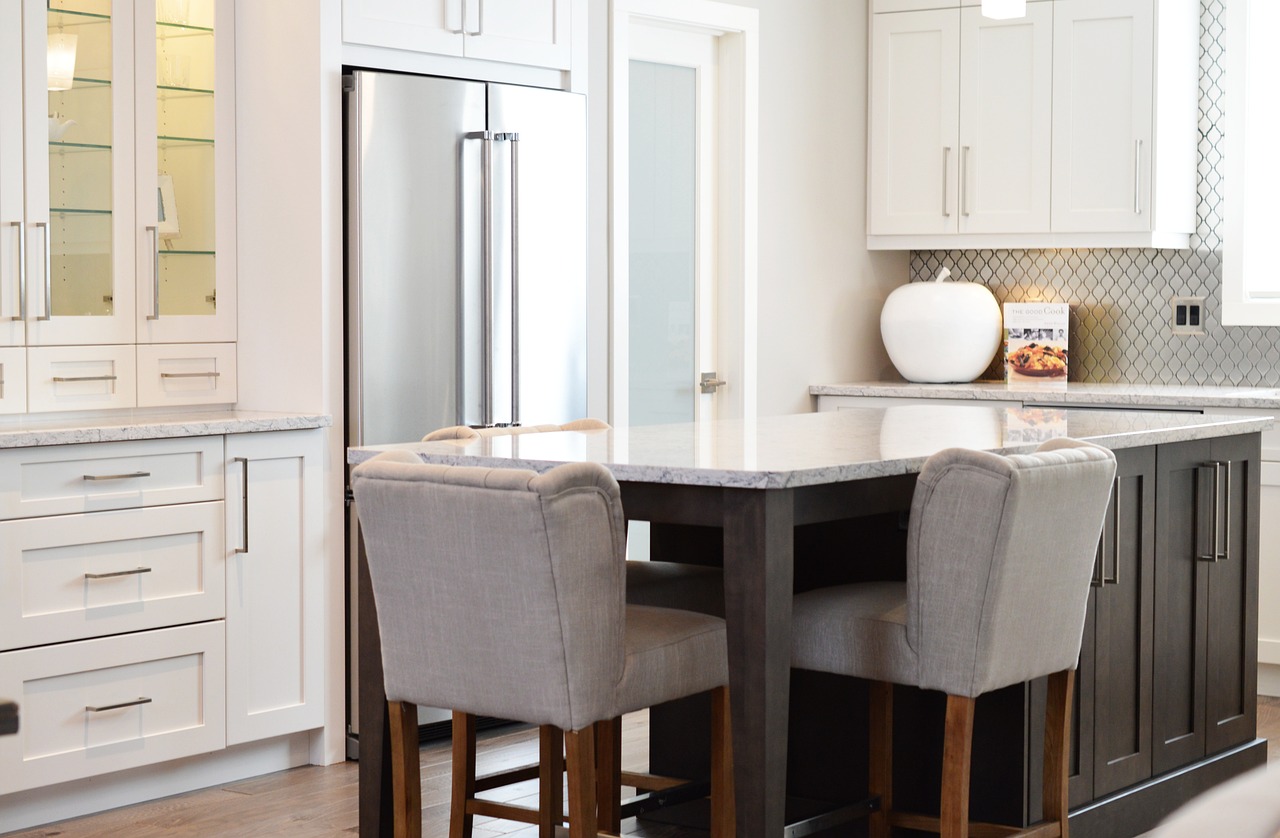
Home Security Measures
When it comes to securing your home, implementing effective security measures is your first line of defense against intruders. Think of your home as a fortress; without the right protections in place, it becomes an easy target. There are numerous strategies that can significantly enhance your home security, making it less inviting for would-be burglars. It's not just about locking your doors and windows; it's about creating an environment that discourages crime through a combination of technology, community involvement, and personal vigilance.
One of the most effective ways to bolster your home security is through the installation of an alarm system. These systems vary widely in features and complexity, from basic door and window sensors to comprehensive setups that include motion detectors and surveillance cameras. The mere presence of an alarm system can deter potential intruders, as they are often wary of homes equipped with such technology. Additionally, many modern alarm systems can be monitored remotely via smartphone apps, allowing you to keep an eye on your property even when you're not home.
Speaking of surveillance, security cameras have become increasingly popular in recent years. They not only provide real-time footage of your property but also serve as a visual deterrent. When criminals see visible cameras, they are less likely to attempt a break-in. Additionally, many cameras come equipped with night vision and motion detection features, enhancing their effectiveness. Be sure to position cameras at key entry points, such as front and back doors, garages, and driveways, to maximize coverage.
Another effective strategy is to engage with your neighbors through a neighborhood watch program. This community-oriented approach fosters a sense of vigilance among residents, creating a network of eyes and ears that can report suspicious activities. When neighbors look out for one another, it builds a protective barrier around your community. Regular meetings can help keep everyone informed about local crime trends and encourage proactive measures.
In addition to these high-tech solutions, there are several simple yet effective measures you can take to enhance your home security:
- Secure your doors and windows: Invest in high-quality locks and ensure that all entry points are secured, even when you're at home.
- Use outdoor lighting: Motion-activated lights can illuminate dark areas around your home, making it harder for intruders to approach unnoticed.
- Maintain your yard: Keep bushes and trees trimmed to eliminate hiding spots for potential intruders.
Lastly, don't forget about the importance of personal awareness. Always be mindful of your surroundings and report any suspicious activity to local authorities. Remember, a proactive approach to home security can significantly reduce the likelihood of a break-in. By combining technology, community involvement, and personal vigilance, you can create a safe haven for you and your loved ones.
Q: What is the best type of security system for my home?
A: The best security system depends on your specific needs. Consider a system that includes both alarms and cameras for comprehensive protection.
Q: How can I make my home less appealing to burglars?
A: Simple measures like securing doors and windows, using outdoor lighting, and maintaining your yard can significantly deter potential intruders.
Q: Are neighborhood watch programs effective?
A: Yes, neighborhood watch programs can be very effective as they foster communication and vigilance among neighbors, creating a safer community.
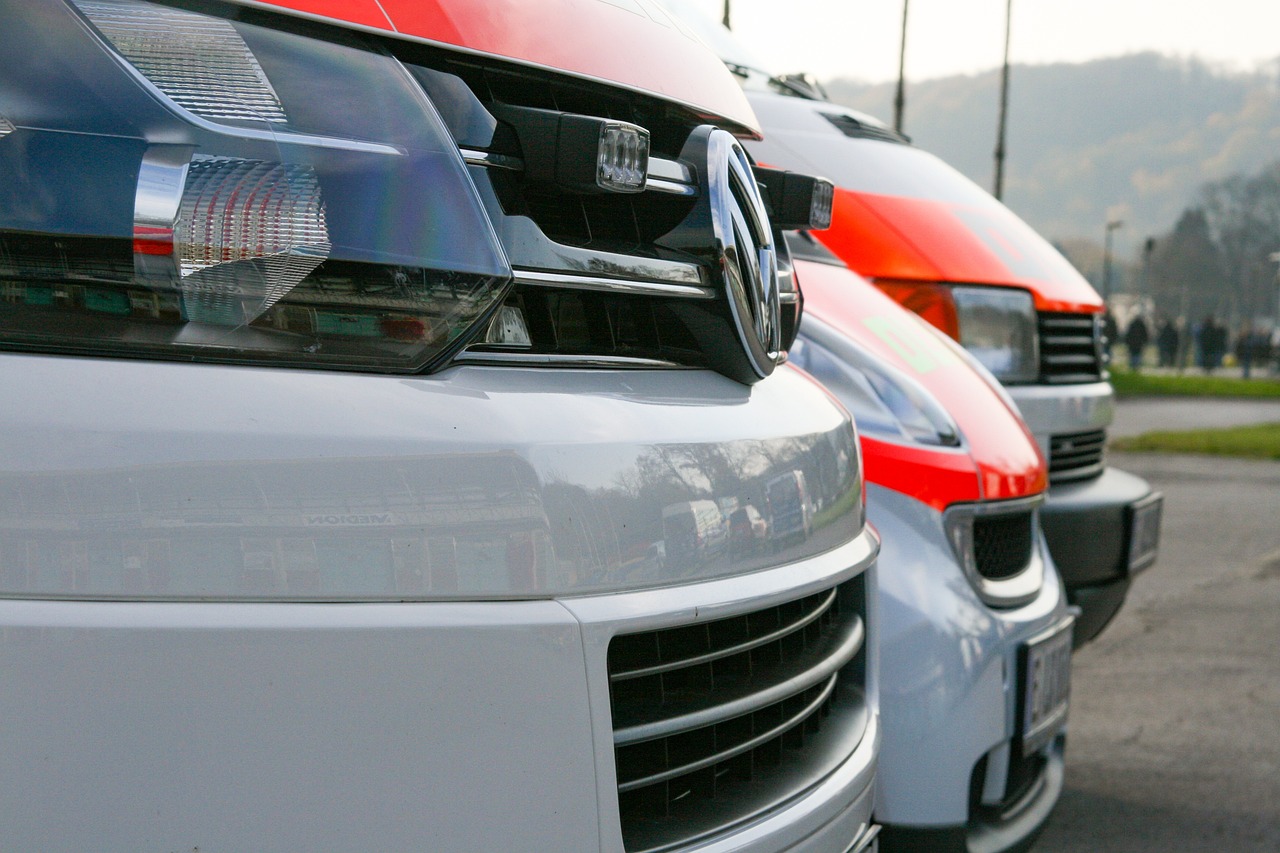
Emergency Preparedness Plans
When it comes to ensuring the safety of your family, having a solid emergency preparedness plan is non-negotiable. Think of it as your family's safety net, ready to catch you when unexpected situations arise. Whether it’s a natural disaster, a fire, or any unexpected emergency, being prepared can make a world of difference. But how do you go about creating a plan that actually works? Well, let’s dive into the essentials!
First off, it’s crucial to involve everyone in your household in the planning process. This isn’t a one-person job! Gather your family for a discussion about potential emergencies you might face, such as earthquakes, floods, or even home invasions. Involving everyone not only helps in identifying risks but also ensures that everyone feels empowered and informed. After all, knowledge is power!
Next, you’ll want to establish communication strategies. In the chaos of an emergency, knowing how to reach each other is vital. Designate a family member as the main point of contact who can coordinate information if you’re separated. You might also consider setting up a group chat or utilizing emergency apps that can help keep everyone in the loop. Remember, the goal here is to ensure that no one feels lost or alone in a crisis.
Another key element of your emergency plan is identifying designated meeting points. These are locations where your family can regroup if you’re unable to return home. Choose places that are easy to remember and accessible, such as a neighbor's house or a local park. Make sure everyone knows how to get there, even if it means taking a different route than usual. Having a safe haven to meet can alleviate a lot of stress during an emergency.
But let’s not stop there! It’s also essential to regularly practice your emergency plan. Just like athletes practice their plays, your family should run through various scenarios to ensure everyone knows their roles and responsibilities. Schedule monthly drills that simulate different emergencies. For instance, practice what to do in case of a fire—where to exit, how to stay low to avoid smoke inhalation, and where to meet outside. You could even create a fun family game out of it to keep everyone engaged!
Now, what about supplies? An emergency kit is a must-have component of your preparedness plan. This kit should include essentials like water, non-perishable food, a flashlight, batteries, a first-aid kit, and any medications your family might need. Don’t forget to check and update your kit regularly, especially if you have young children whose needs might change. Consider making a checklist to ensure you have everything you need, and keep it in a visible spot.
Lastly, remember that your plan isn’t set in stone. As your family grows or changes, so should your emergency plan. Regularly review and update it to reflect any new circumstances or lessons learned from your drills. Keeping your emergency preparedness plan fresh ensures that you’re always ready to face the unexpected.
- How often should I review my emergency plan?
It's recommended to review your emergency plan at least once a year or whenever there are significant changes in your household. - What should I include in my emergency kit?
Your emergency kit should contain water, food, first-aid supplies, a flashlight, batteries, and any necessary medications. - What are some good communication strategies during an emergency?
Designate a family member as a point of contact and consider using group messaging apps to keep everyone informed. - How can I make emergency drills more engaging for my family?
Turn drills into games or challenges to make them fun, and reward participation to encourage enthusiasm.
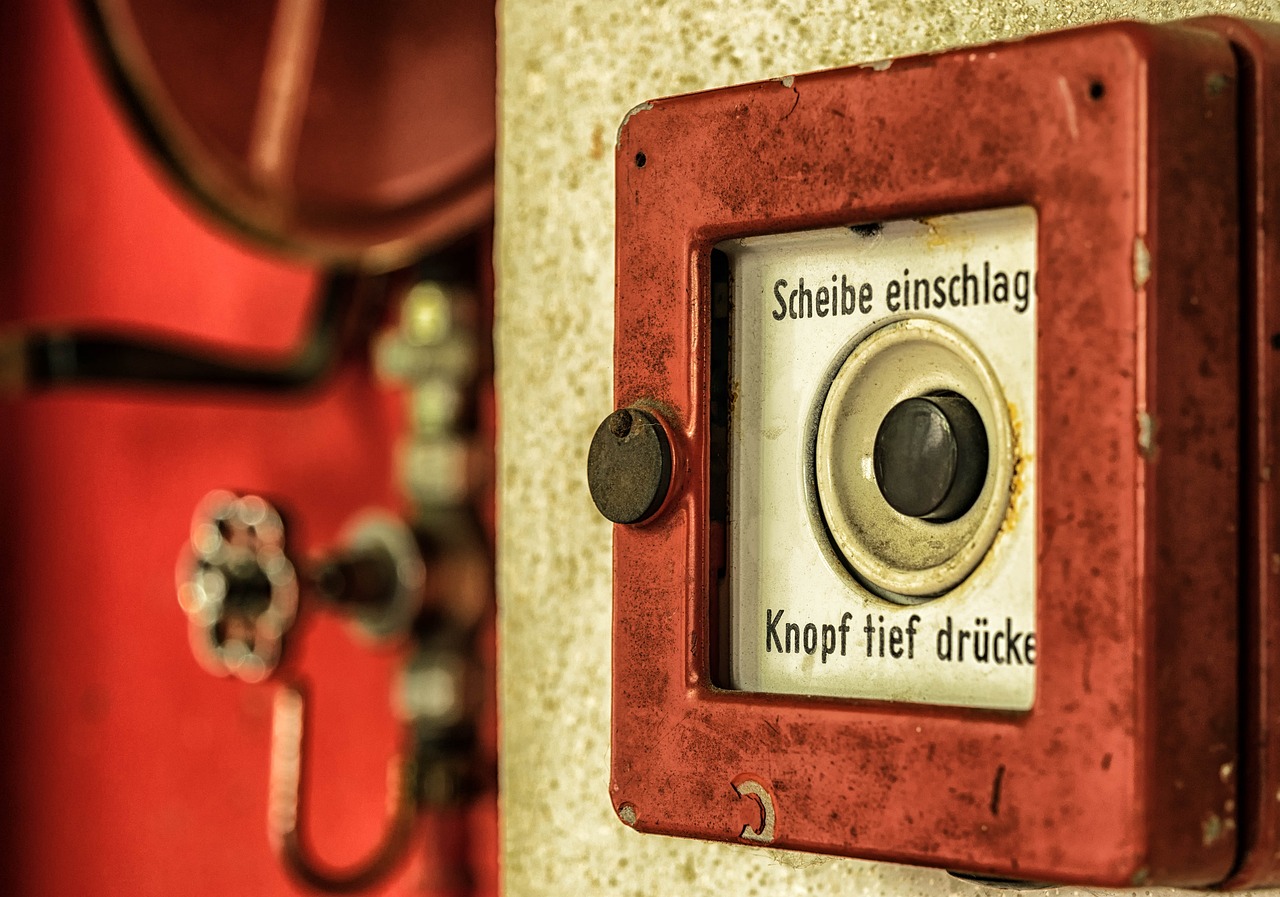
Creating a Family Emergency Plan
When it comes to ensuring the safety of your loved ones, having a family emergency plan is absolutely essential. Think of it as your family's roadmap during a crisis, guiding everyone on what to do and where to go. The first step in crafting this plan is to sit down together and discuss potential emergencies that could occur in your area. Whether it’s a natural disaster like a hurricane or an unexpected event like a house fire, understanding the risks is key. You might be surprised to learn that simply talking about these scenarios can help reduce anxiety and make everyone feel more secure.
Once you've identified possible emergencies, it's time to establish clear communication strategies. In our fast-paced world, having a reliable way to stay in touch is crucial. Consider designating a family communication leader—someone who will be responsible for reaching out to everyone during a crisis. This could be a friend or relative who lives outside your immediate area, as they may be easier to contact when local lines are down. Make sure everyone in your family has this person’s contact information, and practice how to reach them during an emergency.
Next, you’ll want to determine specific meeting points. In the event of an evacuation, it’s important to have a safe location where everyone knows to gather. This could be a neighbor's house, a local park, or any other easily accessible place. Create a map or a simple list of these locations and share it with all family members. It’s like having a treasure map, guiding you to safety when the unexpected strikes.
Don't forget to practice your plan! Regularly conducting emergency drills is a great way to ensure everyone knows their role and feels confident in their actions. You might want to set aside time every few months to run through different scenarios, whether it’s a fire drill or a severe weather evacuation. The more familiar everyone is with the plan, the less panic there will be when a real emergency occurs.
Finally, consider creating a family emergency kit. This kit should include essential supplies such as water, non-perishable food, first aid items, flashlights, and batteries. Make sure to review and update this kit regularly, especially if you have young children whose needs may change. Here’s a quick overview of what to include in your emergency kit:
| Item | Quantity |
|---|---|
| Water (1 gallon per person per day) | 3-day supply |
| Non-perishable food | 3-day supply |
| First aid kit | 1 |
| Flashlight | 1 |
| Extra batteries | As needed |
By taking these proactive steps, you’re not just preparing for the worst; you’re also fostering a sense of security within your family. Remember, the goal of your family emergency plan is to ensure that everyone knows what to do in a crisis, which can save precious time and potentially lives. So, gather your family, start the conversation, and create a plan that empowers everyone to act decisively when it matters most.
- What should be included in a family emergency plan? Your plan should include communication strategies, designated meeting points, and an emergency kit with essential supplies.
- How often should we practice our emergency plan? It’s recommended to practice your emergency plan at least twice a year to ensure everyone is familiar with their roles.
- Where should we keep our emergency kit? Store your emergency kit in a location that is easily accessible to all family members, such as a closet near the front door.
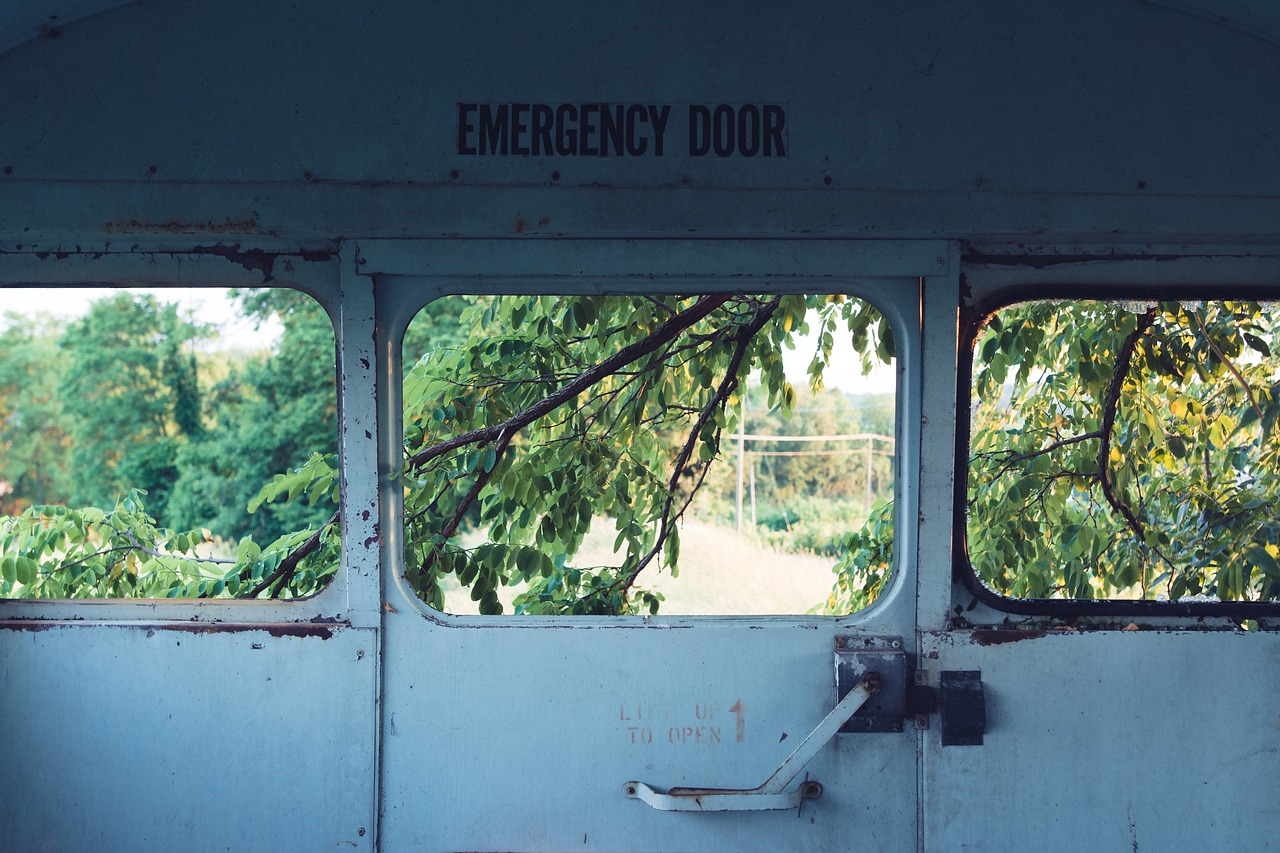
Practicing Emergency Drills
When it comes to ensuring the safety of your family during an emergency, practicing emergency drills is absolutely crucial. Think of it like rehearsing for a play; without practice, the performance can be chaotic and ineffective. By conducting regular drills, you reinforce the actions everyone needs to take, making it second nature when a real crisis occurs. Imagine the peace of mind that comes from knowing your loved ones can act swiftly and confidently in a challenging situation!
Emergencies can take many forms, from fires to natural disasters, and each scenario requires a different response. Therefore, it’s important to tailor your drills to cover a variety of situations. For instance, you might want to practice:
- Fire evacuations
- Earthquake safety protocols
- Severe weather responses
- Intruder alerts
To get started, gather your family and discuss the types of emergencies that could occur in your area. This conversation not only raises awareness but also helps everyone feel involved in the planning process. Once you’ve identified the scenarios, create a detailed plan for each one. This plan should outline the steps to take, the safest exits to use, and where to meet once everyone is outside. Consider drawing a simple map of your home and marking the escape routes clearly.
Now, let’s talk about frequency. How often should you practice these drills? Experts recommend conducting emergency drills at least twice a year. However, if you live in an area prone to specific hazards, such as hurricanes or earthquakes, you may want to increase the frequency. Additionally, consider varying the times of day you practice to simulate real-life unpredictability. A drill during the evening, for instance, can reveal potential challenges that may not have been apparent during daylight hours.
After each drill, take a moment to gather feedback. Ask your family members what went well and what could be improved. This reflection can lead to valuable insights that enhance your emergency response plan. Plus, it’s an opportunity to address any concerns or fears your children might have, turning a potentially scary topic into a constructive conversation.
Finally, don’t forget to include pets in your emergency plans. Just like family members, they need to know where to go and how to stay safe. Practice holding your pets securely and evacuating with them, ensuring they are part of your family’s safety plan. Remember, it’s not just about the drills; it’s about building a culture of safety within your home.
In summary, practicing emergency drills is essential for preparing your family for unexpected situations. By regularly rehearsing different scenarios, you empower your loved ones to respond effectively, reducing panic and confusion during actual emergencies. So, gather your family, create a plan, and start practicing today!
Q1: How often should we practice emergency drills?
A1: It is recommended to practice emergency drills at least twice a year, but if you live in an area prone to specific hazards, consider increasing the frequency.
Q2: What types of emergencies should we prepare for?
A2: You should prepare for various emergencies, including fires, earthquakes, severe weather events, and intruder alerts.
Q3: How can I involve my children in the emergency planning process?
A3: Involve your children by discussing potential emergencies, creating plans together, and practicing drills. This helps them feel included and reduces anxiety about emergencies.
Q4: Should pets be included in emergency drills?
A4: Yes, pets should be included in emergency plans. Practice evacuating with them to ensure their safety during a crisis.
Frequently Asked Questions
- What are the most common home safety risks?
Home safety risks can come in various forms, including fire hazards, carbon monoxide exposure, and potential intrusions. It's essential to be aware of these risks to take preventive measures and ensure your family's safety.
- How often should I test my smoke detectors?
You should test your smoke detectors at least once a month. Additionally, replace the batteries at least once a year and the entire unit every 10 years to ensure they are functioning correctly.
- Where should I install carbon monoxide detectors?
Carbon monoxide detectors should be installed on every level of your home, especially near sleeping areas. It's crucial to follow the manufacturer's guidelines for placement to maximize safety.
- What types of fire extinguishers do I need at home?
It's recommended to have at least one multi-purpose fire extinguisher (Class ABC) in your home, ideally located in the kitchen and near any potential fire hazards. Consider additional extinguishers for garages or workshops.
- How can I improve my home security?
Improving home security can be achieved through various measures, such as installing alarm systems, surveillance cameras, and motion-sensor lights. Joining a neighborhood watch program can also enhance community safety.
- What should be included in a family emergency plan?
A family emergency plan should include communication strategies, designated meeting points, and specific roles for each family member during emergencies. Regularly reviewing and updating the plan is vital for preparedness.
- How often should I practice emergency drills?
Practicing emergency drills at least twice a year is recommended. This helps reinforce safety protocols and ensures that everyone knows what to do in case of a fire, natural disaster, or other emergencies.



















